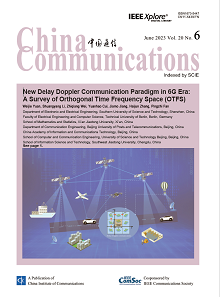
In the 6G era, Space-Air-Ground Integrated Network (SAGIN) are anticipated to deliver global coverage, necessitating support for a diverse array of emerging applications in high-mobility, hostile environments. Under such conditions, conventional orthogonal frequency division multiplexing (OFDM) modulation, widely employed in cellular and Wi-Fi communication systems, experiences performance degradation due to significant Doppler shifts. To overcome this obstacle, a novel two-dimensional (2D) modulation approach, namely orthogonal time frequency space (OTFS), has emerged as a key enabler for future high-mobility use cases. Distinctively, OTFS modulates information within the delay-Doppler (DD) domain, as opposed to the time-frequency (TF) domain utilized by OFDM. This offers advantages such as Doppler and delay resilience, reduced signaling latency, a lower peak-to-average ratio (PAPR), and a reduced-complexity implementation. Recent studies further indicate that the direct interplay between information and the physical world in the DD domain positions OTFS as a promising waveform for achieving integrated sensing and communications (ISAC). In this article, we present an in-depth review of OTFS technology in the context of the 6G era, encompassing fundamentals, recent advancements, and future directions. Our objective is to provide a helpful resource for researchers engaged in the field of OTFS.
Due to the large amount of unused and unexplored spectrum resources, the so-called sub-Terahertz (sub-THz) frequency bands from $100$ to $300$ GHz are seen as promising bands for the next generation of wireless communication systems. Channel modeling at sub-THz bands is essential for the design and deployment of future wireless communication systems. Channel measurement is a widely adopted method to obtain channel characteristics and establish mathematical channel models. Channel measurements depend on the design and construction of channel sounders. Thus, reliable channel sounding techniques and accurate channel measurements are required. In this paper, the requirements of an ideal channel sounder are discussed and the main channel sounding techniques are described for the sub-THz frequency bands. The state-of-the-art sub-THz channel sounders reported in the literature and respective channel measurements are presented. Moreover, a vector network analyzer (VNA) based channel sounder, which supports frequency bands from $220$ to $330$ GHz is presented and its performance capability and limitation are evaluated. This paper also discussed the challenge and future outlook of the sub-THz channel sounders and measurements.